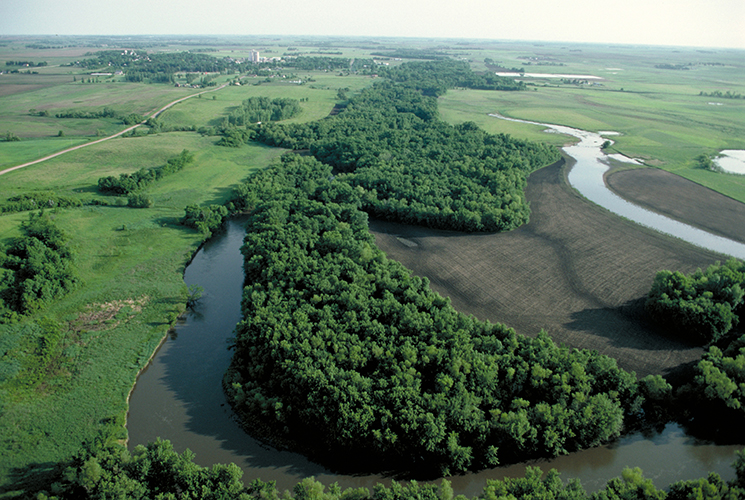Trees and Shrubs growing along the edge of fields act as Farm Buffer Zones and clean farm runoff which protect streams and waterways from toxins and pollutants
RIPARIAN FOREST BUFFERS are trees, shrubs, and grasses located next to rivers, streams, and lakes to help protect aquatic resources by filtering farm runoff and preventing erosion. Buffer areas can support wildlife habitat, produce crops, improve water quality, and reduce flood damage.

Riparian forest buffers are natural or re-established streamside forests made up of tree, shrub, and grass plantings. They buffer non-point source pollution of waterways from adjacent land, reduce bank erosion, protect aquatic environments, enhance wildlife, and increase biodiversity.USDA
Tools
- Conservation Buffers: Design Guidelines for Buffers, Corridors, and Greenways
- Buffer$
- AgBufferBuilder: A Filter Strip Design Tool for GIS
- Riparian Bibliography (Vegetated Stream Riparian Zones: Their Effects on Stream Nutrients, Sediments, and Toxic Substances)









No comments:
Post a Comment